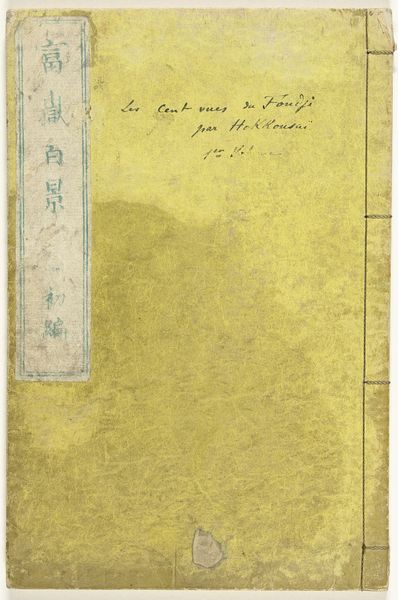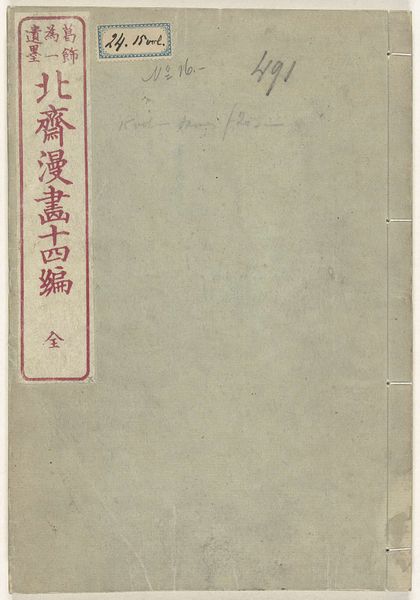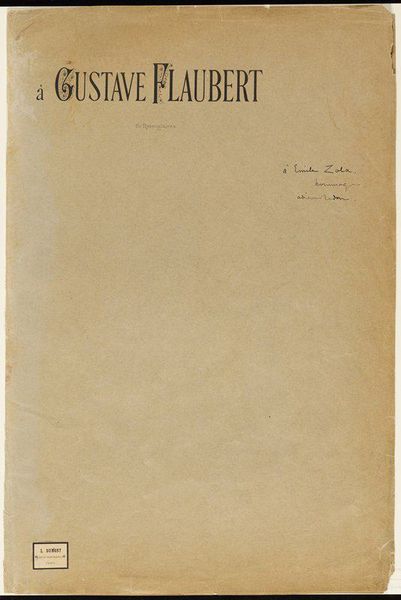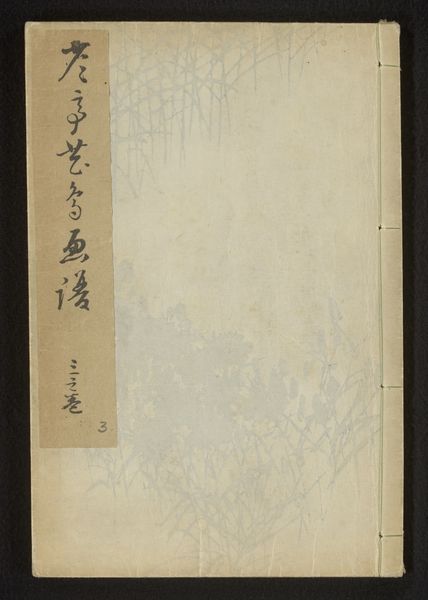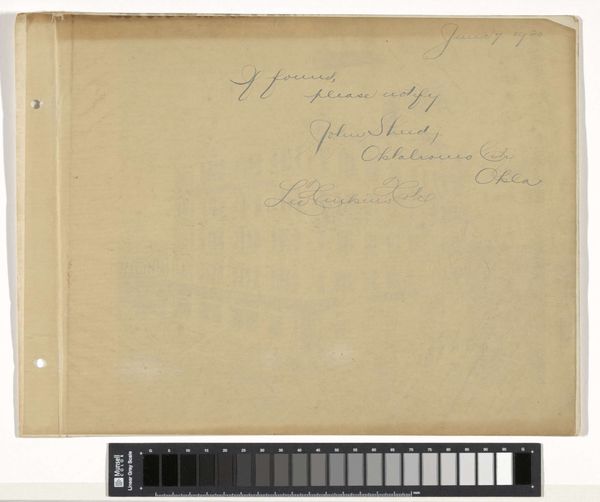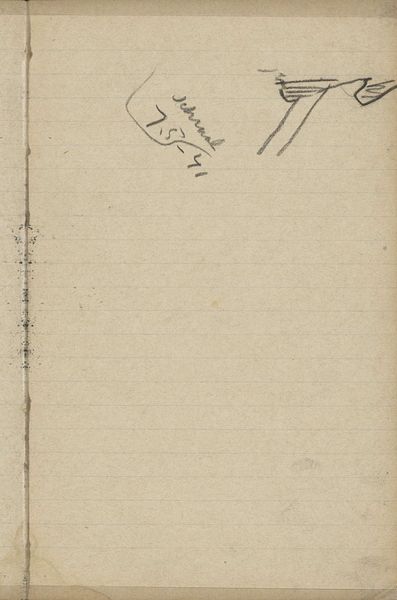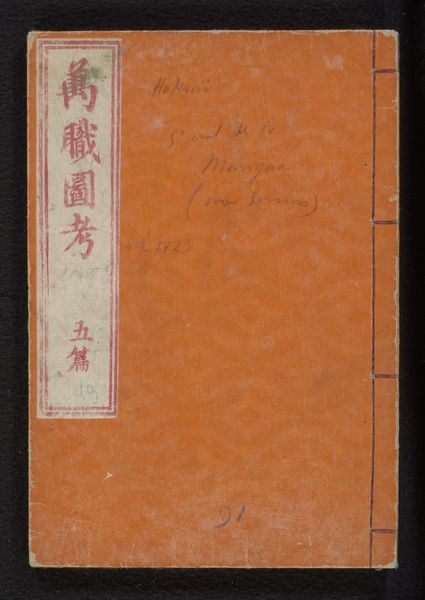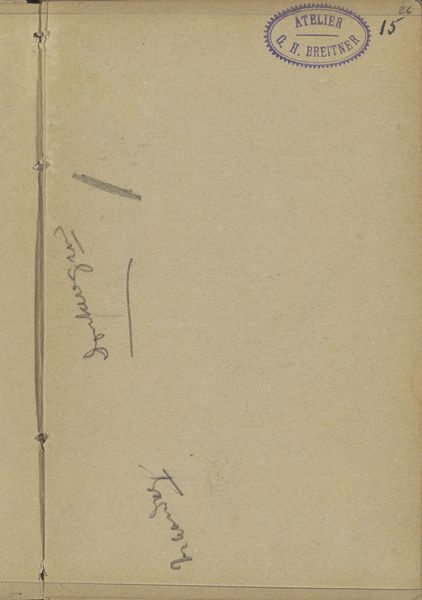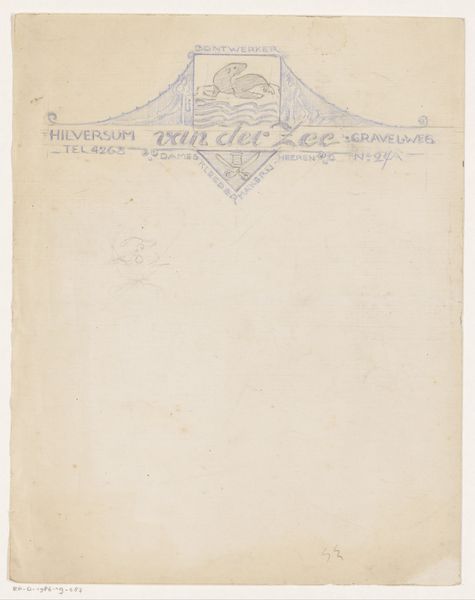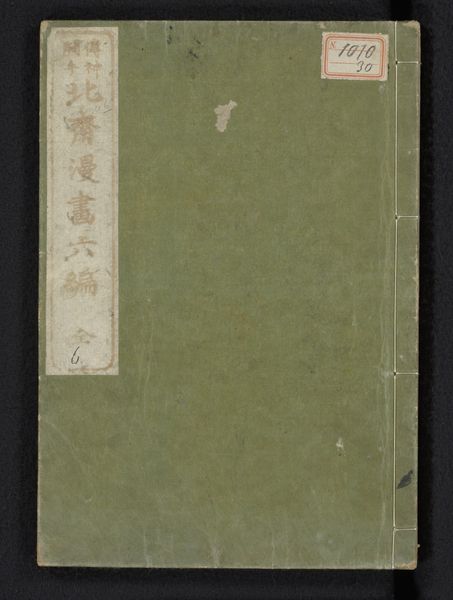
Dimensions: height 248 mm, width 163 mm
Copyright: Rijks Museum: Open Domain
Editor: This is the cover of *Honderd gezichten op de berg Fuji - deel drie*, a woodblock print from around 1876, by Katsushika Hokusai. It’s striking in its simplicity – almost minimalist. Just a textured, yellow surface with simple bookbinding, calligraphy on the left, and some handwritten notes to the right. What stands out to you? Curator: Well, let's not underestimate that seemingly simple yellow surface. Consider the *process* of its creation. That color wouldn't have been readily available; it suggests particular trade routes and dye production processes of the time. Where were the pigments sourced, and what was the social status of someone who could afford these particular dyes? Editor: So you're seeing it as a commodity already? Curator: Precisely! We should look into the availability of paper. Was it handmade? What type of labor went into its production? Ukiyo-e prints weren't just artistic expressions; they were also products within a growing consumer culture. The means of printing enabled wider distribution compared to traditional paintings. This allowed people to *own* an image of Fuji. The notes hint at a collector’s interest as a commodity. Editor: That's fascinating, I never considered that so many economic implications were bundled up with it. It is not merely a picture but a tangible piece of socio-economic history. Curator: Exactly. The woodblock print's existence depended on craftspeople: the block carvers, the printers, the paper makers and so forth. Think of them and their crucial contributions and how they fit in the culture. Now, let's dive deeper into the role this object had and trace where the materials came from. Editor: It certainly offers more perspectives now. Thank you!
Comments
No comments
Be the first to comment and join the conversation on the ultimate creative platform.
